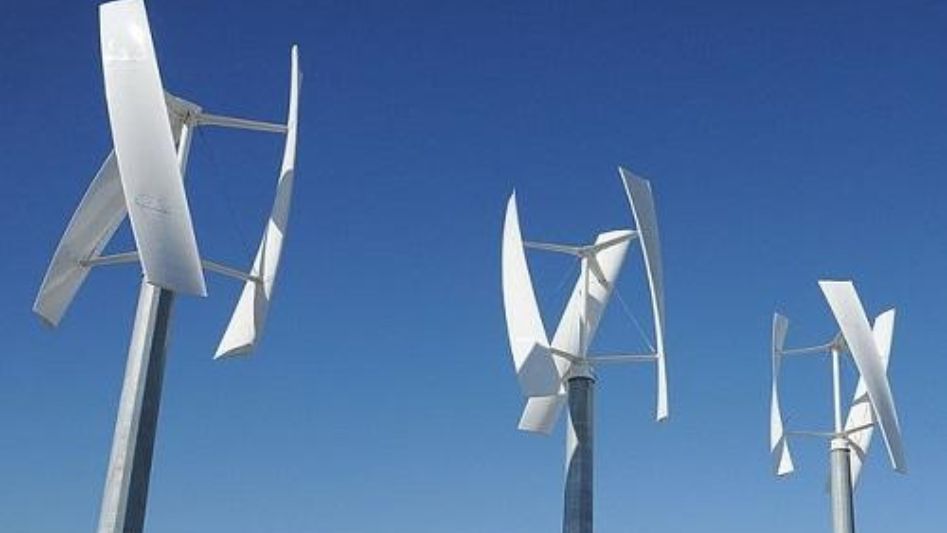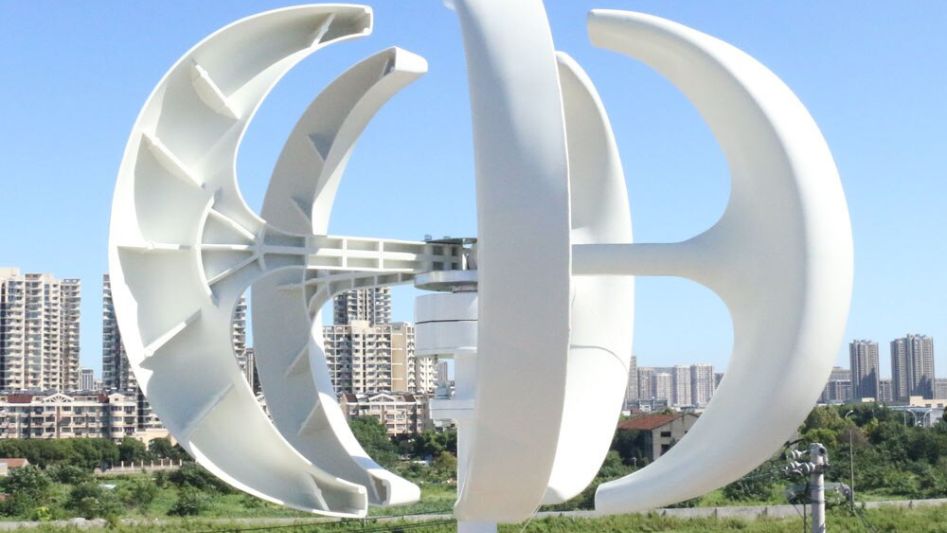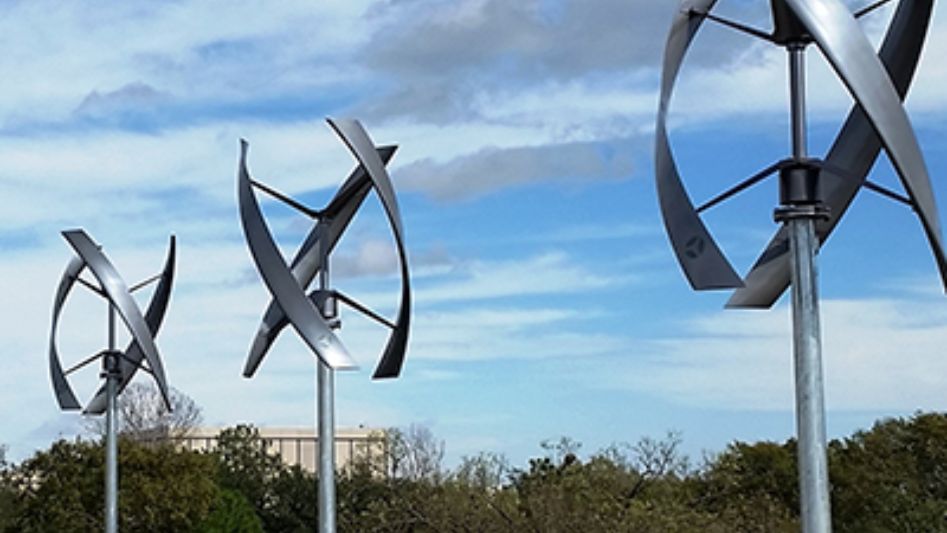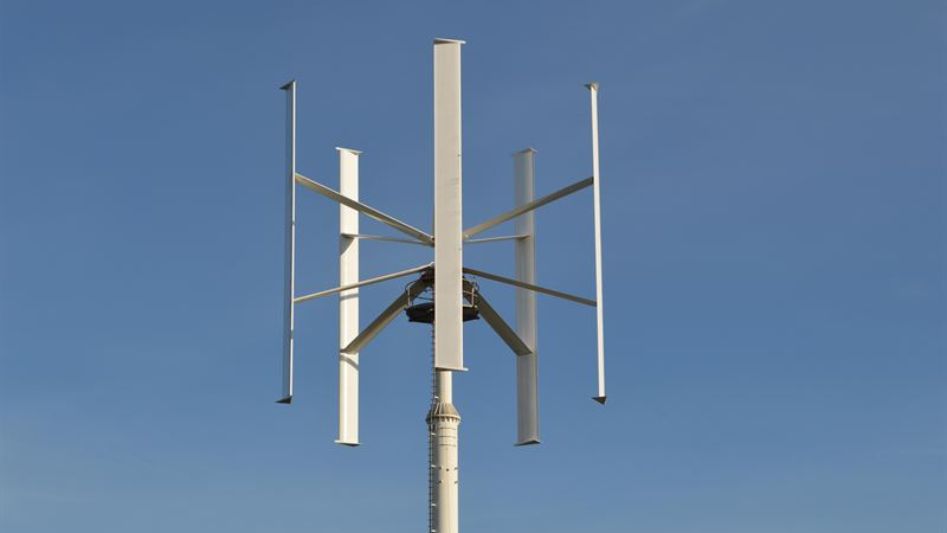The amount of pollution in the air and the ocean’s height have been steadily rising. Therefore, renewable energy sources have been expanding all over the globe in order to both lower the cost of energy and safeguard the environment. In order to circumvent this limitation, wind turbines are constructed to produce electrical energy. A wind turbine is a kind of electrical generator that harnesses the wind’s kinetic energy to produce usable electrical current. These wind turbines come in a wide variety of forms, dimensions, and configurations. Therefore, there are two different kinds of wind turbines: horizontal-axis wind turbines and vertical-axis wind turbines. This page is a general overview of the vertical axis wind turbine, often known as a VAWT. Vertical axis wind turbines are one of several kinds of wind turbines.

What is Vertical Axis Wind Turbine or VAWT?
There is a form of wind turbine known as the Vertical Axis Wind Turbine, and the most common use for this type of wind turbine is in residential settings, where it serves as a source of renewable energy for the residence. This particular turbine consists of the rotor shaft as well as two or three blades, and the rotor shaft rotates in a vertical direction. Therefore, the movement of the turbine is connected to the spinning of the coins on the edge. When it comes to this particular turbine, the generator is installed at the base of the tower, and the blades are wrapped around the shaft.
The blades of a vertical axis wind turbine are positioned vertically, allowing the turbine’s rotors to rotate around a vertical shaft. This is the core of the vertical axis wind turbine’s operating concept. Therefore, they produce energy through the use of wind power. Because the rotor is linked to the generator and is driven by the wind, the generator is able to transform the energy from mechanical to electrical form. The blade, shaft, bearing, frame, and blade support are the components that make up a vertical-axis wind turbine.
Vertical Axis Wind Turbine
The savories VAWT is the sort of Vertical Axis Wind Turbine that is used in this particular system.
Gear Box
The primary function of a gearbox in a wind turbine is to increase the rotational speed of a low-speed shaft so that it may connect to a high-speed shaft that is connected to an electrical generator. Because of the inconsistency and randomness of the wind loads present in the environment, the gears included inside a wind turbine’s gearbox are exposed to intense cyclic loading.
Generator
The mechanical energy is converted into electrical energy by the generator that is housed inside the wind turbine. Compared to generators employed in electricity networks, these generators seem a little bit out of place.
Rechargeable Battery
The rechargeable battery of the wind turbine is where the wind turbine’s output electricity, which was created by the generator, will be kept.
LDR Circuit
The light’s ON/OFF functionality is provided by the LDR circuit.
Vertical Axis Wind Turbine Working
Once the wind starts turning the turbine, it will begin to function. Within this particular lighting system, the savory VAWT is used. When this turbine starts turning, the generator will take the mechanical energy it produces as input, and it will turn that energy into electrical energy.
This generator is installed in the medians that separate the lanes of traffic on the roadway. The wind turbine wings have a curved design so that they may capture the wind coming from the two-way road, where the speed of the vehicles will cause the turbine to spin. Here, the speed of the wind is used in a variety of different ways depending on our needs.
The gearbox, comprised of gears, is coupled to a wind turbine with a vertical axis. This gearbox has a straightforward connection to the shaft of the electric generator. The gearbox in this system will improve the revolutions of the turbine internally and transfer these rotations to the generator in the same way that a mechanical input would be sent. Once the wind starts blowing, this turbine will begin to rotate. Therefore, the generator will use this input to create the output in the form of electrical energy, and the rechargeable battery will store this output after it has been generated.
With the assistance of a turbine, this method allows for the generation of power, which is then stored in the battery utilizing the speed at which the vehicle is traveling. The energy that has been stored is put to use via the automated lighting system. The resistor, Light Dependent Resistor (LDR), transistor, battery, and LED are the components that make up the LDR circuit (Light Emitting Diode).
The emitter of the transistor is linked to the GND, whilst the collector terminal of the transistor is connected to the negative terminal of the LED. In this instance, the terminals of the resistor are connected directly to the voltage source, while the negative is linked to the LDR.
After the LDR circuit has been directly linked to the battery, the LDR will be able to begin sensing the presence of light. Therefore, the LED will automatically turn on once the amount of light being received becomes less intense. Therefore, this LDR circuit may be used in lighting control systems that automatically turn lights on or off. The light-dependent resistor will detect the light and provide power to the LED as the light intensity from the sun begins to diminish as evening approaches.

Vertical Axis Wind Turbine Types
The Savonius Wind Turbine and the Darrieus Wind Turbine are the two kinds of vertical-axis wind turbines that are now on the market.
Savonius Wind Turbine
The Savonius wind turbine has blades that have a helix-like arrangement as they wrap around the vertical shaft. This wind turbine has a solid wind-receiving surface, which is one of the most important qualities of the device. These wind turbines primarily depend on a process known as flow resistance to make the rotors active. This means that the dynamic force of the wind on the turbine blades is the active force that makes the rotor turn.
At the same time, the opposite side of the blades comes up against an aerodynamic force of resistance. This is analogous to how we feel while we are running or cycling, since the breeze is coming from the other direction. Because of this, the turbines may revolve at a speed that is simply proportional to the speed of the wind. Please click on this link if you would like additional information about the Savonius Wind Turbine.
Darrieus Wind Turbine
The name “Darrieus wind turbine” comes from the device’s creator, a Frenchman named Georges Darrieus. It is also known as an “egg beater” in certain circles. These turbines have long, curved wings that are linked at both the top and bottom of the rotor shaft. Each end of these wings is connected to the rotor shaft.
These particular kinds of wind turbines get their rotation from the lift provided by the aerodynamic force. The wind will produce suction on the front face of the wind turbine as it flows around the building, which will cause the wings to rotate in the opposite direction. These turbines, much like Savonius turbines, have wings that are shaped in a way that reduces the amount of drag they suffer. After the revolution has begun, the speed of these turbines will increase so that they may spin at a rate that is greater than the speed of the wind. Please click on this link if you would like additional information about the Darrieus Wind Turbine.
Advantages
The following is a list of benefits that come with having a vertical axis wind turbine.
- Protection for the labor force.
- Scalability.
- They are able to produce power regardless of which way the wind is blowing.
- Because the gearbox, generator, and several other components are positioned on the ground, it is not necessary to have a sturdy tower to support everything.
- These wind turbines have a vertical axis, hence the design process for them is less expensive.
- Installation is straightforward in contrast to those of other varieties.
- Because they are portable, we won’t have any trouble moving them from one place to another.
- In order to lessen the danger posed to both humans and birds, they have a reduced number of speed blades.
- They function properly in every climate, even those with varying winds and mountainous terrain.
- These may be built in places where buildings of a greater height are prohibited.
- Because of the ease of its operation, it does not disrupt the lives of individuals living in residential areas.
- These turbines may be positioned such that they are near to the ground, which will lower the costs associated with construction and maintenance.
- There is no need for any mechanisms since all we need to do is run these turbines.
- You may put the wind turbine in places that prohibit towering building construction.
- These are great options for household energy sources since they are efficient, quiet, and cost effective—especially in metropolitan settings.
Disadvantages
The following is a list of the drawbacks associated with a wind turbine with a vertical axis.
- Due to the drag caused by the blades’ rotation, the degree of efficiency will be lower when compared to HAWT. This is because of the design of the blades.
- Because they are linked on bases rather than towers, such as the ground or buildings, it is not easy to assemble them on towers.
- Rotation is not very effective in terms of efficiency.
- Reduce the maximum allowable wind speed.
- Component Wear-down.
- Low level of efficiency
- Automatic process for getting started.
- Because it is set out in an open location, animals or birds can force it to stop turning.
- They experience a significant level of vibration due to the turbulent flow of air caused by the movement of air near the ground.
- They contribute to the problem of noise pollution.
Applications
The following is a list of applications that may benefit from using a wind turbine with a vertical axis.
- Used in less extensive wind power installations.
- Utilized in the construction of residential buildings.
- Even under unstable weather circumstances, such as strong wind and turbulence, these turbines may be utilized to produce power and provide electricity.

Therefore, this article aims to provide an overview of a vertical-axis wind turbine, also known as a VAWT. This particular kind of wind turbine has the primary rotor shaft placed vertically, allowing it to catch wind from any direction. These wind turbines can function regardless of the wind blowing direction without the requirement for yaw controls. These wind turbines have a unique design and a number of beneficial qualities, one of which is a silent operation. Because these are more compact units, we should have no trouble situating them in either commercial or residential areas. I want to ask you this: what exactly is a wind turbine with a horizontal axis?
You May Also Like
Vertical Axis Wind Turbines. Can They Work Together?
Vertical Axis Wind Turbine in Urban Applications
Can A Small Wind Turbine Power A House?
5 Use Cases For Wind Energy That You Will Not Believe
What is Horizontal Axis Wind Turbine (HAWT)? Working & Its Applications

